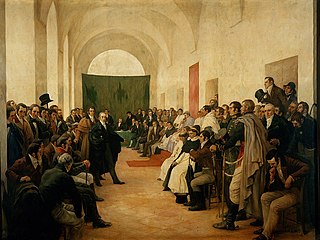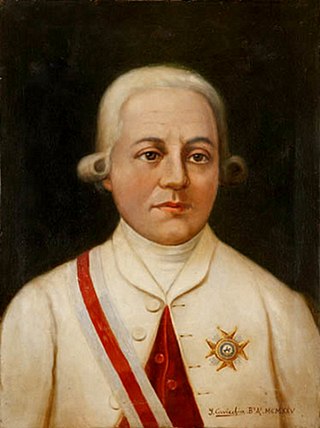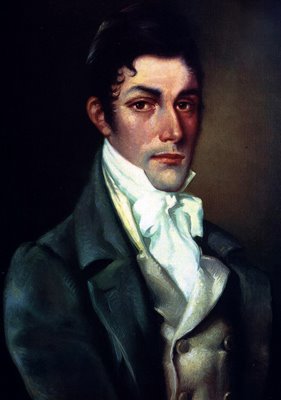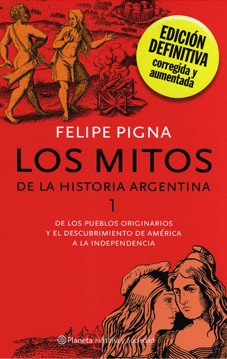
The Argentine War of Independence was a secessionist civil war fought from 1810 to 1818 by Argentine patriotic forces under Manuel Belgrano, Juan José Castelli, Martin Miguel de Guemes and José de San Martín against royalist forces loyal to the Spanish crown. On July 9, 1816, an assembly met in San Miguel de Tucumán, declaring independence with provisions for a national constitution.

The Viceroyalty of the Río de la Plata meaning "River of the Silver", also called the "Viceroyalty of River Plate" in some scholarly writings, in southern South America, was the last to be organized and also the shortest-lived of one of the viceroyalties of the Spanish Empire in the Americas. The name "Provincias del Río de la Plata" was formally adopted in 1810 during the Cortes of Cádiz to designate the Viceroyalty of the Río de la Plata.

The May Revolution was a week-long series of events that took place from May 18 to 25, 1810, in Buenos Aires, capital of the Viceroyalty of the Río de la Plata. This Spanish colony included roughly the territories of present-day Argentina, Bolivia, Paraguay, Uruguay, and parts of Brazil. The result was the removal of Viceroy Baltasar Hidalgo de Cisneros and the establishment of a local government, the Primera Junta, on May 25.

Santiago Antonio María de Liniers y Bremond, 1st Count of Buenos Aires, KOM, OM was a Spanish military officer and a viceroy of the Viceroyalty of the Río de la Plata. Although born Jacques de Liniers in France, he is more widely known by the Spanish form of his name.

The British invasions of the River Plate were two unsuccessful British attempts to seize control of the Spanish colony of the Viceroyalty of the Río de la Plata, located around the Río de la Plata in South America – in present-day Argentina and Uruguay. The invasions took place between 1806 and 1807, as part of the Napoleonic Wars, War of the Third Coalition at a time when Spain was an ally of Napoleonic France. In Argentine historiography, the two successive defeats of the British expeditionary forces are known collectively as the "Reconquista" and the "Defensa", respectively.
The military history of Argentina spans a period of over two centuries. During the course of those years, it broke colonial ties with Spain, waged a civil war to define its organization and wars with Brazil, Paraguay, Britain and France. The military also played a role in the institutional life of the country, during a series of coups d'état that took place in the 20th century.

Mariano Moreno was an Argentine lawyer, journalist, and politician. He played a decisive role in the Primera Junta, the first national government of Argentina, created after the May Revolution.

Cornelio Judas Tadeo de Saavedra y Rodríguez was an Argentine military officer and statesman. He was instrumental in the May Revolution, the first step of Argentina's independence from Spain, and became the first head of state of the autonomous country that would become Argentina when he was appointed president of the Primera Junta.

The National Historical Museum is a museum located in Buenos Aires, Argentina, and is a museum dedicated to the history of Argentina, exhibiting objects relating to the May Revolution and the Argentine War of Independence.

Juan José Castelli was an Argentine lawyer who was one of the leaders of the May Revolution, which led to the Argentine War of Independence. He led an ill-fated military campaign in Upper Peru.

Don Rafael de Sobremonte y Núñez del Castillo, 3rd Marquis of Sobremonte, third Marquis of Sobremonte, was an aristocrat, military man and Spanish colonial administrator, and Viceroy of the Río de la Plata. He was accused of cowardice by the people of Buenos Aires after escaping the city during the British invasions of the Río de la Plata in 1806.

Martín de Álzaga was a Spanish merchant and politician during the British invasions of the Río de la Plata.

The Ensenada de Barragán is a small bay on the Río de la Plata, some 40 kilometres (25 mi) southeast of Buenos Aires, Argentina. The area is in the Ensenada district of Buenos Aires province, centred on the city of the Ensenada. The old cove has partly silted since the 17th century, and the area is now considered to be part of Isla Santiago.

Manuel Maximiliano Alberti was an Argentine priest from Buenos Aires when the city was part of the Viceroyalty of the Río de la Plata. He had a curacy at Maldonado, Uruguay during the British invasions of the River Plate, and returned to Buenos Aires in time to take part in the May Revolution of 1810. He was chosen as one of the seven members of the Primera Junta, considered the first national government of Argentina. Alberti supported most of the proposals of Mariano Moreno and worked at the Gazeta de Buenos Ayres newspaper. Internal disputes among Junta members had a negative effect on Alberti's health, and he died of a heart attack in 1811.

Los mitos de la historia argentina is a series of books written by Felipe Pigna, focused on the History of Argentina. As of 2010 the series have four books, which span from the Spanish arrival to America up to the governments of Juan Domingo Perón.
The May Revolution was a series of revolutionary political and social events that took place during the early nineteenth century in the city of Buenos Aires, capital of the Spanish Viceroyalty of the Río de la Plata, a colony of the Spanish Crown which at the time contained the present-day nations of Argentina, Bolivia, Paraguay and Uruguay. The consequence of the revolution was that the Viceroy Baltasar Hidalgo de Cisneros, was forced out from office, and the role of government was assumed by the Primera Junta. There are many reasons, both local and international, that promoted such developments.

The May Revolution was a week-long series of revolutionary events that took place from May 18 to May 25, 1810, in Buenos Aires. It started the Argentine War of Independence, and it is considered the birth of modern Argentina.

The Argentine War of Independence was fought from 1810 to 1818 by Argentine patriotic forces under Manuel Belgrano, Juan José Castelli and José de San Martín against royalist forces loyal to the Spanish crown. On July 9, 1816, an assembly met in San Miguel de Tucumán, declared full independence with provisions for a national constitution.
Marie Anne Périchon de Vandeuil (1775-1847), known as la Perichona, was a French noblewoman, who had an active role in the politics of Buenos Aires during the last year's of Spanish rule over the Viceroyalty of the Río de la Plata.

Casa de Liniers is a national historical site of Buenos Aires, Argentina, built towards the end of 1780s. It was the official residence of Santiago de Liniers, 1st Count of Buenos Aires.
















